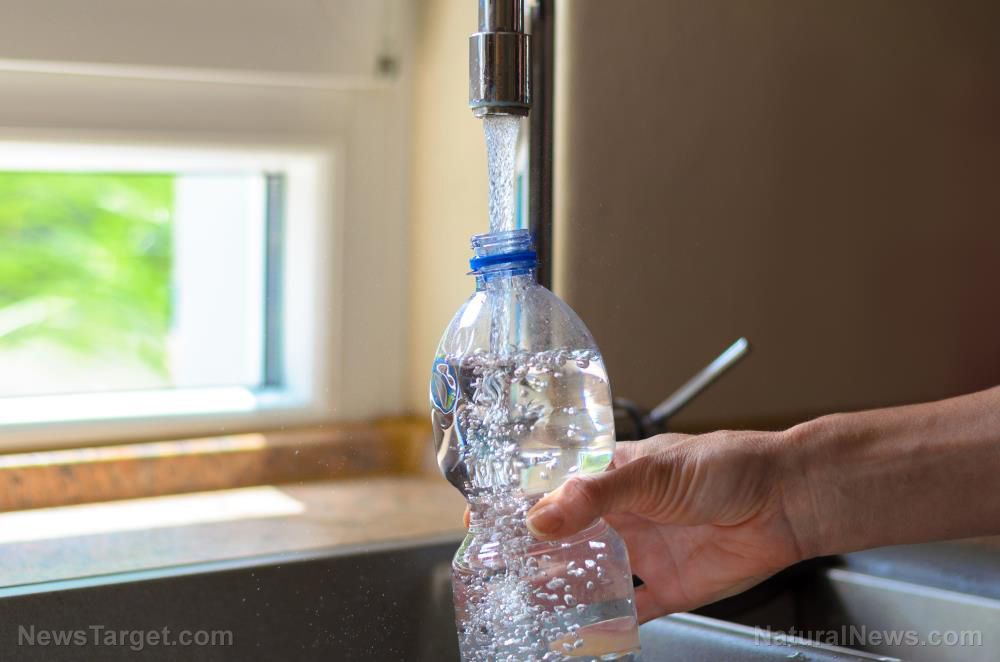
Advertisement
Stockpiling water can ensure your survival when disaster strikes, but before you start building your water supply, you should consider the pros and cons of different storage and purification methods. (h/t to FoodStorageMoms.com)
Water storage basics
The containers you choose for your water stockpile will vary depending on your budget, the number of people you’re prepping for and storage space.
Store your water containers at least two inches off concrete or cement floors to prevent chemicals from the ground from leaching into your containers. One option is to use 2×4’s to keep containers off the concrete.
Depending on where you live, you can gather water from the following sources:
- Banana or plantain trees
- Cacti
- Green bamboo thickets
- Rainwater
- Seawater (Never drink seawater without desalting.)
- Snow or ice
- Trees (e.g., baobab, palm or umbrella trees)
- Tropical vines
When SHTF, you can survive without water for at least three days. You need to store at least one to four gallons of water per person per day.
If you can afford it, store water for cooking, dish washing, doing the laundry and bathing. Those who live in areas with hot weather will also need more water.
Here are the pros and cons of using different methods to preserve water and containers.
Preserving water
Bleach
Bleach is an inexpensive water purifier. Use two drops of non-scented liquid household chlorine bleach per gallon of water.
Water treated with bleach needs to be rotated every six months.
Water preserver
High-quality water preservers are used to kill pathogenic organisms that cause diseases like dysentery and typhoid. Water preservers also eliminate and prevent the growth of algae, fungi, mold and yeast that makes water undrinkable.
Water treated with these products must be rotated every five years.
Water containers
Bottled water
Keep an eye on promos and sales so you can stock up on bottled water without breaking the bank.
This option won’t sit well with those who want to be eco-friendly preppers because you will produce a lot of plastic waste. Another disadvantage of bottled water is its short shelf life.
Depending on how the water was processed, bottled water can only be stored for one to two years.
Five-Gallon jugs
Five-gallon jugs are affordable and easy to store. You can even stack certain kinds of jugs.
Five-gallon jugs are hard to lift. When full, each jug can weigh as much as 41 pounds.
55-Gallon barrels
Containers like 55-gallon barrels may be cheaper, depending on where you live. Empty barrels cost about $35 at the nearest local store.
55-gallon barrels are bulky and rather hard to transport. You must use a bung to tighten or loosen the top.
A pump is also needed to retrieve water from the barrel. Finally, large barrels can be hard to hide and store if you want to prep discreetly.
WaterBricks
Unlike 55-gallon barrels, WaterBricks can be stacked. These brick-shaped water containers have a handle and you can easily lift two 3.5-gallon containers.
WaterBricks are more expensive than the other options on this list.
High capacity tanks
High capacity tanks have two spigots: One at bucket level and another at ground level. These kinds of tanks are best for filling up a bucket. They come in 150-, 160-, 200-, 250-, 300- and 350-gallon sized tanks.
High capacity tanks have several disadvantages since they’re bulky. You need at least two people to move high capacity tanks. Once they’re in place, they can be difficult to move.
Since high capacity tanks are very heavy, you may need to anchor them to the wall for safe storage. High capacity tanks cost more, particularly if you have them shipped to your home. Purchase them locally and have them delivered to save as much money as you can.
Don’t wait until it’s too late to prep and store water in your stockpile. When SHTF, you’ll need clean water for drinking, cooking, bathing, gardening and washing.
Sources include:
Advertisement
Advertisements
















